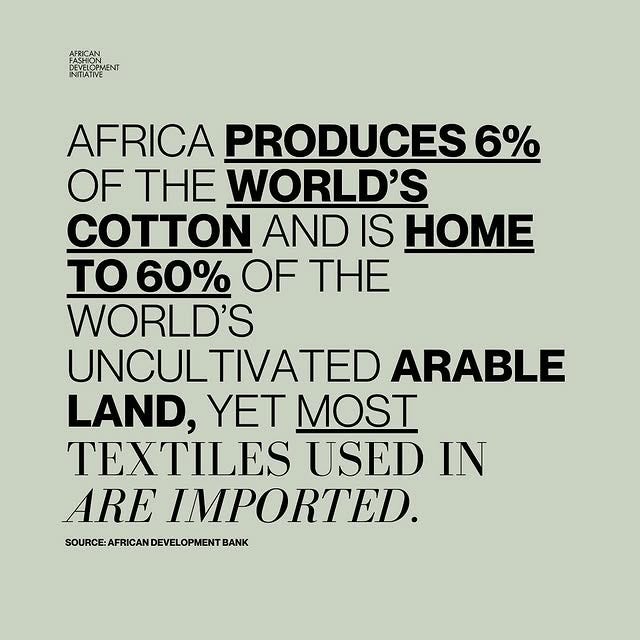Creativity in crafting support and investment in African creativity
Greetings,
The debate continues around when we stop saying Happy New Year but since this is the first newsletter for the year, I am going to say it. I am hoping that, despite the turmoil in the world today, 2025 has started with ease and peace of mind. For us at Ogojiii, the commitment continues to be to put a spotlight on African innovation in design, enterprise and current affairs. And the hope is that you will continue to travel this journey with us.

At the end of 2024, UNESCO added the Kente cloth, Ghana’s traditional handwoven textile to the Representative List of the Intangible Cultural Heritage of Humanity. Emmanuel Onyango writes in Kente: Ghana’s iconic fabric and UNESCO heritage status, “Once only worn by royals, Ghanaians believe the Kente cloth is the most beautiful fabric in the world. Its bold patterns and vibrant colours are a national pride and the result of an age-old craft dating back centuries.”
Other textiles on the list include traditional Li textile techniques of spinning, dyeing, weaving and embroidering from China, Toda Embroidery from India and Himroo from Maharashtra, India.
There is a push for the Moroccan Caftan to also be added to the Intangible Cultural Heritage list.
The South African restaurant chain Nando’s has a special relationship with art, in particular contemporary southern African art, with a collection of over 25,000 artworks which have been incorporated into the decor of their 1,000-plus restaurants in 24 countries. This support of the arts cannot be understated and includes sponsorship of a designer competition and various arts events.
The Berlin International Film Festival (Berlinale) is one of the significant film festivals taking place around the world. For the 2025 edition, taking place in early February, nine African films are being shown. It continues to be difficult for African filmmakers to get funding for projects and nine out of over 200 feels like a drop in the ocean, but any avenue that provides African film with a platform has to be acknowledged.
In the Listen To Your Footsteps podcast which I host, I chatted to filmmaker, archival researcher and International Emmys member Sfiso Khanyile about framing African stories, the importance and challenges of accessing archives and the general challenges facing filmmakers.
In December 2024, Dada Masilo, acclaimed South African dancer and choreographer sadly passed away. Trained in classical ballet and contemporary dance, she was known for her fusion of African and classical ballets, like her interpretations of Swan Lake and Giselle. Her work contributed to a reframing of how African dance is perceived within context of dance overall. The tragedy is that we will not get to experience her creative genius as she grew older in the way that Germaine Acogny, who is considered the ‘mother of contemporary African dance’ continues to do so.
In the briefing paper Investing in African Fashion by The African Fashion Development Initiative (AFDI), the authors write, “Small investments between $1,000 and $5,000 can significantly facilitate African fashion businesses in adopting sustainable practices. These funding can assist small businesses in procuring sustainable resources, adopting ethical labour practices, and creating creative goods.”
The AFDI provides micro-grants and support services to ensure that fashion entrepreneurs have both the cashflow and the knowledge to build sustainable businesses.
There are increasingly multiple support and investment programmes both on and beyond the continent, focused on contributing to the growth of the fashion industry, such as those listed here: Scaling African Fashion.
Over the years, particularly when Ogojiii was a print magazine, we often put a spotlight on fashion business and designers, many of whom have gone onto build and grow fashion brands, such as The Sartists. Kabelo Kungwane and Wanda Lephoto have both carved interesting spaces for themselves over the years.
If you enjoyed this edition of the Ogojiii newsletter, please do share with others who you feel would enjoy it as well. We look forward to your comments, input and contributions. The power of Substack is as space for dialogue and collaboration.
Until next time
Kojo




